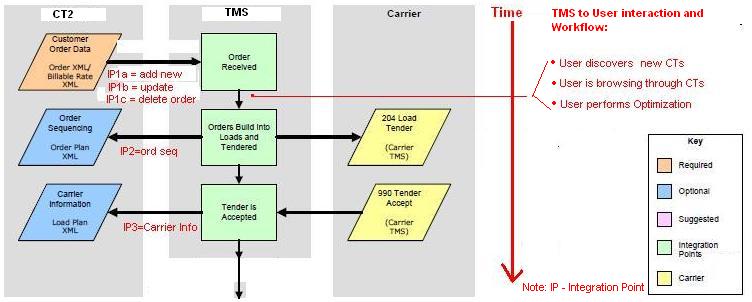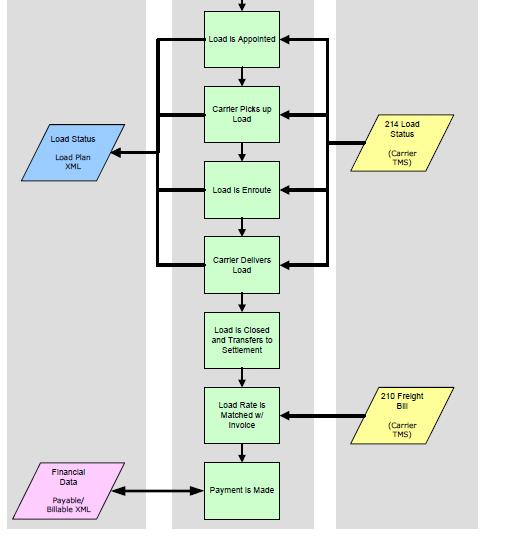Requirements for EDI to TMS
From UG
Contents |
About and See also
This is a Analysis / Requirements wiki for EDI to TMS proj
Related
See also: Data Dictionary for EDI to TMS
Glossary
IP - Integration Point
Introduction
Core Business Need: Jaguar needs ability to optimize truck domestic shipments:
- create optimal loads, cost, routs, etc
- automate tariffs, communication with carriers
Above features are normally present in TMS software.
To achieve that it was decided:
- buy and use existing TMS solution (phase 1)
- gradually add these features to CT2 (phase 2)
To complete phase 1 we need to implement:
Vendor evaluation
Currently there are 2 systems we are considering:
- from Descartes
- from Lean Logistics
CT2 and TMS integration
In a nutshell:
- (shipment record will be created in CT2 and approved)
- IP1: New CT2 forwarded to TMS through EDI
- (in TMS Jag oper will run optimizations and select carrier)
- (TMS sens bids to carriers)
- IP2: TMS sends updates to CT2 (Carrier suggested, estim. pick up date, etc)
- (carrier accepts the bid)
- IP3: TMS sends updates to CT2 (Carrier confirmed, etc)
- (start processing shipments)
- IP4: carrier periodically submits updates into TMS (example: actual pickup date, etc)
See Figure below:
Figure Integration Points
Examples
Below are some examples of EDI messages used in Transportation Manager.
- 204 – Load tender message from Transportation Manager to the
carrier. A load tender is a request to pick up a shipment and move it to another location.
- 990 – The carrier’s tender response back to Transportation Manager
(either a yes for picking up the shipment or no for not picking up the shipment).
- 214 – A status message from the carrier to Transportation Manager
(e.g., “Delivered”).
- 210 – An invoice from the carrier to Transportation Manager. The
invoice will have the cost details of moving the shipment.
User to TMS interaction and workflow
This is out of scope of this project. Once TMS vendor is selected and workflow design, link will be provided.



